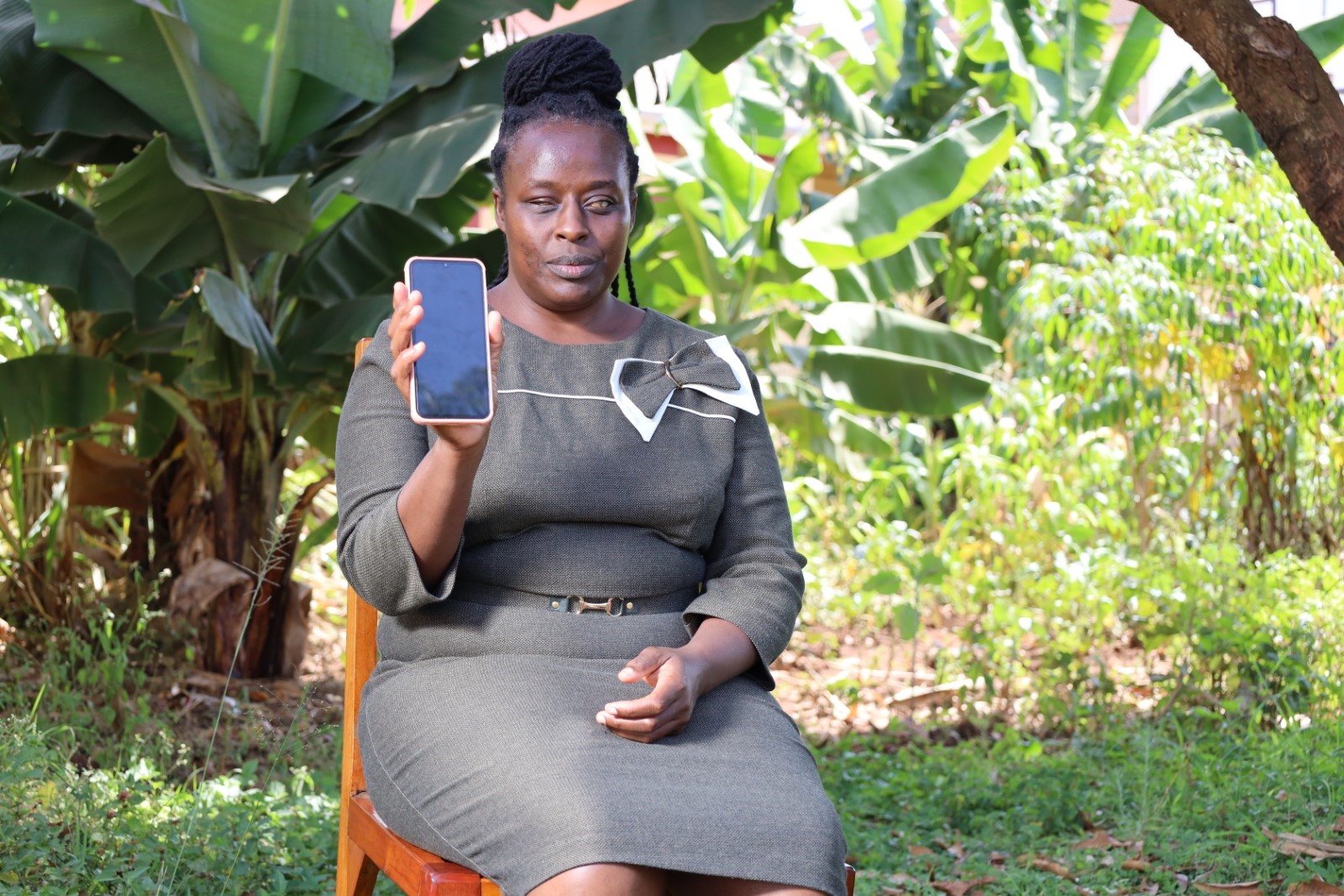A Journey with Technology

Digital assistive technology, including mobile phones and accessible apps, has shown immense potential in enriching the lives of persons with disabilities. For those with visual impairments, features like colour and contrast adjustments or text-to-speech applications enhance reading experiences. Similarly, individuals with hearing impairments benefit from speech-to-text conversion, noise cancellation, and sound amplification features.
In line with this, we visited Felista Kasina at Thika Primary School for the Blind. Felista, who has two decades of teaching experience, was recently enrolled in the mobile as AT project. Since the training, Felista has overcome initial concerns about navigating this new technological terrain. What makes Felista's adjustment remarkable is the user-friendly design of her device, especially its short applications that simplify tasks, such as efficient navigation. The training she received on utilizing voice commands with Google has proven to be a positive change, enabling her to effortlessly send voice messages.
This newfound ability has made her independent, and she is now able to send messages through voice messages. She also highlights the speed and efficiency of sending voice messages that has made her more self-reliant. Other tasks that have been made easier to her include opening emails, scanning documents, and accessing hard copies, have become seamless, eliminating the need for external assistance.
The visually impaired teacher expressed gratitude for the enhanced confidentiality the technology affords her, especially in reading her pay slip and managing personal documents. The ability to read and send emails independently has contributed significantly to her sense of empowerment.
“I can now read my payslip in private without having a guide since all i need is my phone and connectivity.” She says.
Looking ahead, Felista expressed her desire for further improvements in technology, particularly in voice recognition for Kiswahili messages. Despite existing applications, she hopes for enhanced clarity, especially when it comes to messages in different languages.
Felista Syombua's journey stands as a testament to the positive impact of technology in fostering independence among visually impaired individuals. Her newfound ability to navigate daily tasks with ease highlights the potential for continued advancements in accessible technology, ensuring inclusivity for all. As we witness Felista's journey, it becomes clear that technology is not just a tool; it is a catalyst for empowerment and inclusivity in the lives of those who need it most.
This project led by GDI Hub in partnership with local partners in Kenya, Brazil and India aims to investigate accessibility and inclusion for millions of people with vision, hearing, and other impairments. By leveraging the capabilities of smartphones and mobile apps, the project seeks to empower individuals, enabling them to lead healthier, more joyful, and purposeful lives. Researchers will measure how mobile phones, coupled with proper training, act as assistive technology and transform lives.